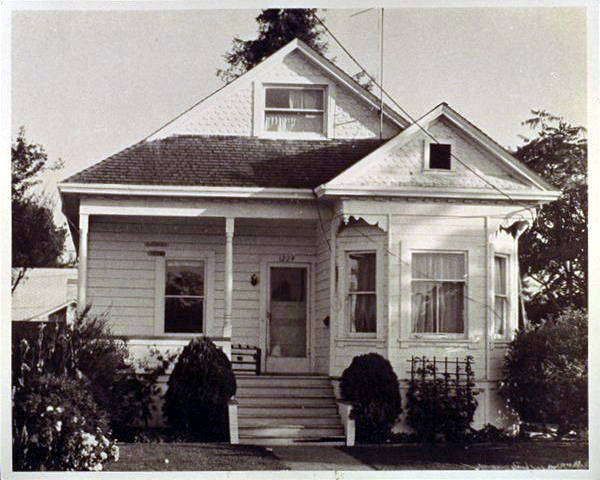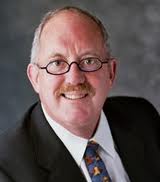The College Terrace Rapist: A Community Fights Back
restrictions on police and prosecutors to do their job, more innocent people are accidentally convicted. But protecting the rights of the accused places an extraordinary burden on the team of cops, prosecutors, judges, and ordinary citizens who fight to protect communities against criminals. It’s a matter of picking your poison.
In Palo Alto, the burdens placed on crime-fighting were at hand in the “College Terrace Rapist” case of the 1970s. During those years, the close-knit 24 block Palo Alto neighborhood was terrorized by a serial rapist who raped some 20-25 women in the area in less than a decade. He had also stalked communities in
Berkeley, Davis, San Francisco and other college towns. In 1979, after 4 rapes were reported in a matter of months, community leaders and police realized they had a serial rapist on their hands. At this point, the community came together. But to catch just one rapist it would take extraordinary work by community leaders, police, and later prosecutors --- as well as a considerable amount of money. And even after the "College Terrace Rapist" openly admitted to his crime, the combination of a lenient judge, a statute of limitations, and generous parole terms would result in his only serving 12 and a half years --- despite admissions of over 100 rapes in the Bay Area.
It was the sharp instincts of Palo Alto detective Brian Vierra that led to the realization that a series of rapes spanning eight years were committed by the same person. Combing back through old cases in 1979, Vierra pieced together a profile of a single perpetrator --- a short white man in his late 20’s to early 30’s with short brown hair and brown eyes --- who was targeting women in their 20s and 30s living alone. His modus operandi rarely varied. He would usually stalk his victims and study their habits before he would cut electricity and phone wires in their home, enter through an open window or door and eventually cut his victims with a short knife before raping them with surgical gloves on.
One victim described her terrifying experience years later in a creative writing class. ""When I woke up, it was really dark and I thought I was having a nightmare. And the way I wake up from a nightmare is I scream in the dream. But he didn't go away. I noticed that I wasn't dreaming and that screaming seemed to be causing chaos. I felt that he had something against my neck. I figured that if I didn't want to die I'd better calm down. I needed to come out of it alive. I wasn't really sure if he was a killer. I decided that these might be my last moments alive. I decided there was a certain way I wanted to live in those moments. I decided to be very calm and centered. I said, 'I know who you are, I know what you want, and I would like you to get it over with.' I thought, well, that's a small price to pay to live.
"The sexual aspect of it was very tiny, insignificant. It was the control, degradation, violation, intrusion: entering my sleep space. It's so creepy that a guy would want that. He had these rubber gloves on and he got up and pulled up his pants. He pulled off one of the gloves and held out his hand to me. It was kind of shocking --- I felt like, I'm going to shake his hand? I shook his cold little dead hand and he left and that was it."
When word went out that their neighborhood was being targeted, the College Terrace community rallied. Led by Colin and Ulla Mick and the College Terrace Residents Association, volunteers went door to door, posting notices and urging residents to lock up their doors and windows at night. Colin Mick designed a small alarm to give to neighbors that would sound a loud noise when power was cut and they even distributed colored stickers for residents to place on their cars so that police could identify vehicles that were not native to the neighborhood.
Palo Alto’s police department also went into overdrive. A nighttime command center was established in a Harvard Street cottage and on Dartmouth Street an undercover female officer moved in with the expressed purpose to leave her windows open and lure in the rapist. Over the course of autumn 1979 and into 1980, police scoured the neighborhood, stopped and questioned some 300 white males in and around College Terrace and taped the perpetrator’s profile on nearly every free-standing structure available. Rewards were offered, extra men assigned to the case and investigators brought in from San Jose and other Bay Area departments. Alarms were set up at the phone company to notify police if any phones went dead at the 30 odd houses of single women in the neighborhood. Diana Sullivan Everstine, a Palo Alto psychiatrist was even hired to develop a psychological profile of the perpetrator.
Solid police work by 22 year-old rookie cop John Costa would eventually lead to the capture of the College Terrace rapist. After a couple of calls came in one evening reporting a suspicious man in the neighborhood, Costa searched College Terrace for an out-of-place person or vehicle. After going so far as climbing a tree at one point, Costa finally decided that the prowler must be hiding from him. Trying to draw him out by pretending to race off in his vehicle --- lights flashing --- Costa then made a U-turn to reenter the neighborhood with lights off. When he did, Melvin Carter’s truck emerged in right in front of him.
When pulled over by Costa, Carter admitted to prowling. “'I have a bit of the voyeur instinct in me tonight,” he told the policeman. “I know a lot of women here, not on a personal basis, but I was just coming back to visit.” But even with this admission to illegal activity, Costa could not arrest Carter. Police cannot arrest a suspect for a simple misdemeanor.
But later investigators looked up Carter and found that he nearly perfectly matched the psychological profile drawn up by Diana Sullivan Everstine. Remarkably, when police went to question him at work, he agreed to a search. In his office cubicle, they found 44 surgical gloves in his backpack, some stained with blood. They also turned up the knife Carter used to cut his victims, the jumpsuit he wore, as well as tools and lists of names and addresses which he took on his trips to College Terrace and other haunts.
Accompanying Palo Alto police back to the city, detective Brian Vierra asked Carter if he was the College Terrace rapist. “Yes, Brian, I am," he replied and then admitted to committing more than 100 rapes in the Bay Area, 20 to 25 in College Terrace. Incredibly, Carter then took police on a kind of tour of past crimes, driving around the College Terrace neighborhood block by block with police, identifying the houses he had burglarized.
The amount of police work needed to catch Melvin Carter was incredible. And even then, prosecution was not a done deal. Carter’s Palo Alto attorneys Tom Nolan and Charles Constantinides had a few tricks up their sleeves. In court they argued that police did not have probable cause to arrest Carter and that his
confession should not be allowed. Furthermore, the statue of limitations of three years had expired on seven of the rapes he had committed in the College Terrace neighborhood.
Eventually, the confessions were allowed and Melvin Carter wound up pleading “no contest” to the whole sheet of accusations. But even then, after all the work done by police and prosecutors, the maximum Judge John R. Kennedy could give Carter was 15 years in jail. In the East Bay, Carter faced another possible 35 years in jail, but another hole that sometimes exists in the criminal system came into play --- a lenient judge. Judge Martin Pulich gave the admitted serial rapist just 10 years, saying that “Carter's frank admission allowed police all over Northern California to close the books on rapes since 1968.”
Additionally, under California law, model inmates are automatically paroled when they have served half their sentence. Not surprisingly, Carter was well-behaved and after just 12 and a half years in prison, he was a free man. After his release from parole, he moved to New York state, taking up residence just blocks from the state university at Geneseo. It seems that in the case of Melvin Carter, despite the good work of cops and prosecutors, the system failed to execute justice. []
Our Reader's Memories:
Be the First!"I have personal knowledge of the actual location of the decoy house. I was supervisor of 1 or 2 undercover squads that was working on the rape cases. I was also the supervisor on the night of the last rape.
The actual location of the Police Decoy House was on Dartmouth, eastside of the street, 4th house from College Terrace, and the one that borders Werry Park.
The Police female decoy stayed in the house at night. There would be one Police Officer hidden in the house. A second police officer was in a van parked in the driveway directly across the street.
The night of Melvin Carter's last rape in College Terrace, he walked south from College and into Werry Park before dark. Carter paused a moment and looked at the decoy house. Carter was then distracted by two teenage boys drinking in the northwest corner of the park. Carter moved on and later rape a women who lived on Harvard. Carter admitted that he was going to target the decoy house that night, but because the boys were in the park he changed targets."
"Jim Zurcher’s approach to finding the College Terrace Rapist is typical. After the rape that fully restarted the investigation to find him, Jim told us to just find him. When he was asked what resources we could have, he said whatever you need. In looking for the College Terrace Rapist, the team would meet in the mornings and through new ideas out. The participatory approach that he fostered was the way we approached finding the Rapist. Everyone in the team had an equal say. "
-Michael
Send Us Your Memory!


Melvin Carter being released.

College Terrace in 1981. (PAHA)

Attorney Tom Nolan defended Carter.
The decoy house bordered William C. Werry Park.